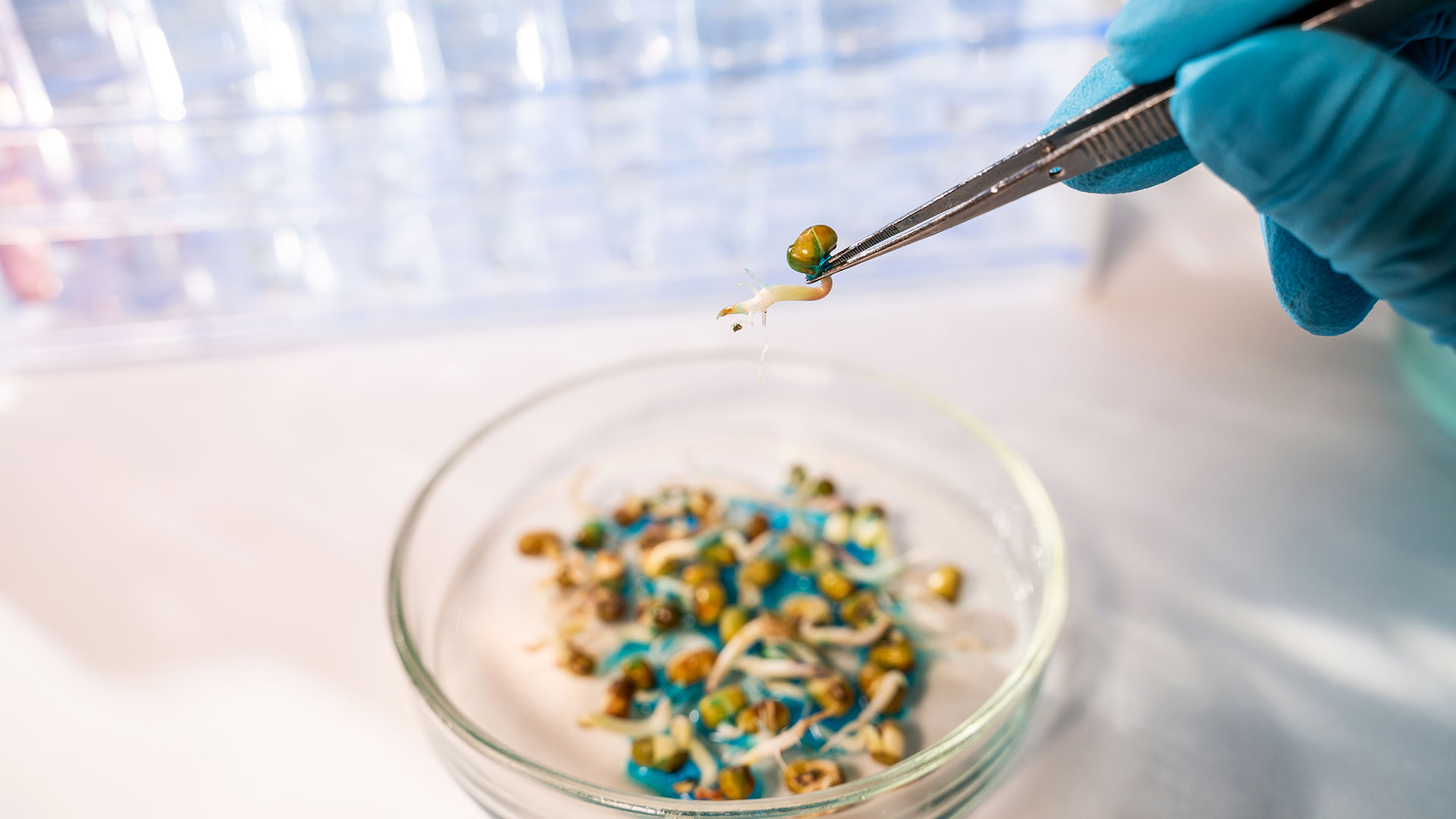Detecting genetically modified crops

A vast variety of soy GM events has entered the market, and analytical testing approaches need to be updated to cover these. It is important to keep in mind that cultivation status of GMOs is subjected to the respective national regulatory framework.
The main reason is that common generic markers used for detection of previous varieties, e.g. the CaMV 35S-Promoter and NOS-Terminator, are not present in many of the new and future varieties. As a result, no exclusive testing regime exists any longer, since a multitude of different solutions are equally valid.
For actors in the supply chain it is becoming increasingly difficult to assess whether a GMO test is really sufficient and therefore rely on a competent laboratory partner more than ever.
To meet the challenge of including more targets in testing methods without putting too much economic burden on the customer, competent laboratories have the possibility to develop so called multiplex-PCR. This allows to combine different primer/probe detection systems in one PCR reaction. Our strategic partner, FoodChain ID Testing GmbH, has been able to stretch the limits of the technique by the development of a decaplex system, allowing for a simultaneous test for 10 soy GMOs in a single PCR tube.
After the detection of GMOs, the quantification of GMOs is required, where some pitfalls need to be taken care of. First of all, it is important to remember, that for a final compliance assessment to legal thresholds, the quantification and total sum of all GMO events per species must be considered. Using quantification data from general marker elements (e.g. CaMV 35S promoter or others) is wrong (unless for results below the quantification limit) for the following reasons. First of all, the copy numbers of markers per haploid genome vary significantly between events. To name just one example out of many, the GM soy event A2704 carries two copies of the CaMV 35S promoter whereas MON40-3-2 contains only one copy, so quantification is intrinsically biased by factor “2”.
Furthermore, it is quite common that GMO containing botanical impurities of other crop plants is present in agricultural commodities, e.g. GM soy in canola products, GM corn in soybeans etc. If markers are used for quantification, results of the GMO botanical impurity will be added, which gives wrong results. Last but not least, markers present in plant viruses, like the CaMV 35S promoter, will give positive results in cases where the virus is present, which is often not restricted only to its host plants, can also be found in soybeans. Examples from the real world include soy lecithins without any GMOs but CaMV 35S promoter values of 2%.
Testing GMO Edited Crops
Genome Edited (GE) Crops are legally considered as GMOs in parts of the world, e.g. EU and New Zealand. The introduced changes in the genome can include deletions and insertions of various sizes, as well as point mutations. So far, no application for approval in the EU has been submitted so far, this means that zero-tolerance for any GE crop applies. In North America cultivated GE crops include the herbicide resistant SU-Canola and a soy variety with altered fatty acid spectrum.
Testing GE crops poses an analytical challenge, for many reasons. First of all, none of the usual markers used as GMO testing target is present, so testing specifically for each GE crop is needed. The EU approval process requires the provision of a specific test and reference material by the developer, however as there is not a single application for EU approval, no methods and reference materials are available so far.
However, it is not impossible to test for characteristic mutations. For example, a method for SU-canola detection has been developed and is already used by the Austrian Environmental Agency and other private laboratories. Other examples include an assay developed by FoodChain ID Testing for point mutations present Clearfield ®Canola, which could become assessed as GMO in France. Additionally, private and governmental laboratories start to evaluate Next-Generation DNA sequencing methods for this analytical questions.
Chances are high that by the ignorance of EU law by the GE crop developers, the agricultural commodity trade is put at risk, as massive recalls are provoked, if tests for unapproved, commercialized GE crops will developed and published.
ProTerra Standard
Created in 2006, the ProTerra Standard has a long-standing history and experience in promoting sustainability in the food and feed supply chain and segregated non-GMO materials. Among others, one of its aims is to secure the supply of sustainably produced, fully traceable, non-GMO ingredients for feed and food.
Principle 5 ensures that genetically modified organisms (GMOs) and their by-products must not be used in the production of ProTerra certified products (this includes technologies such as CRISPR/Cas9). Besides, our packaging label is a mean by which brands can communicate the non-GMO and sustainability commitment directly to consumers and stakeholders.